This post may contain affiliate links. Please see our disclosure for more information.
Miso and tahini bring rich depth and mouth-watering sweet, sour, and salty tastes to the broth of this versatile vegetable soup.
Miso is a probiotic, and tahini is a great source of calcium and healthy fats. If you haven’t explored these two winner foods yet, you’re in for a big treat.
My guess is that once you try this soup, miso and tahini with both turn into healthy food cravings you’ll be happy to have.
Jump to Recipe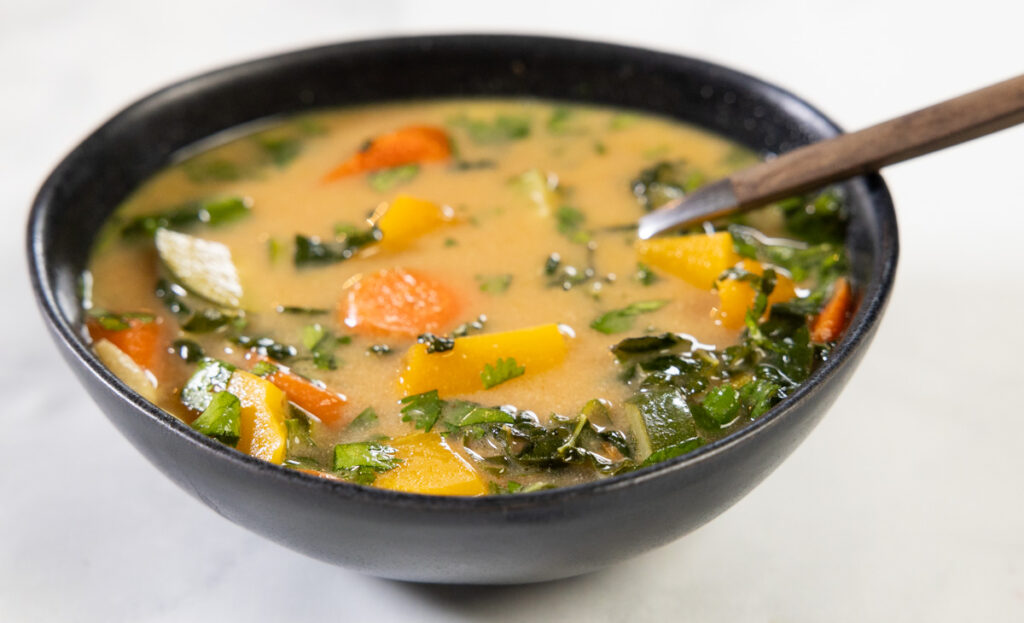
Soup variations
What I love about this soup is how versatile it is.
I’m using potatoes, carrots and leafy greens for the vegetables, but you can literally use anything.
If you’ve got veggies in your fridge right now that need to be used up, throw them in this soup.
Add onions if you’re into alliums and you want a soup that really soothes and calms your mind.
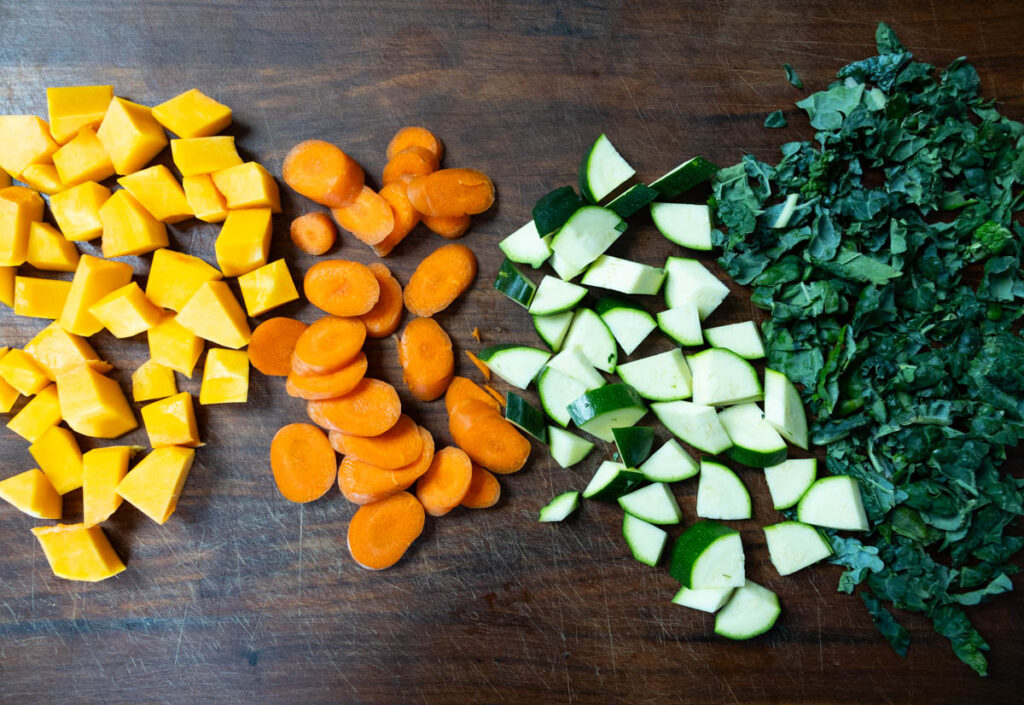
Add beetroot for bold color and liver support.
Try sweet potato or winter squash to sweeten up the broth if that’s what you love.
Lighten the soup up by using more greens.
I’m thinking you could even have it with some boiled egg for protein, or possibly some organic tofu if you’re into that.
Miso
Miso is a salty, fermented grain or bean that’s sold as a paste. When you dissolve miso in hot water, it adds rich, umami flavor.
Miso comes in many types with variations in flavor. The three most common types are white (shiro, sweet, mellow) miso, red (aka) miso, and yellow (shinshu) miso. White is mildest and red is strongest, while yellow is in the middle.
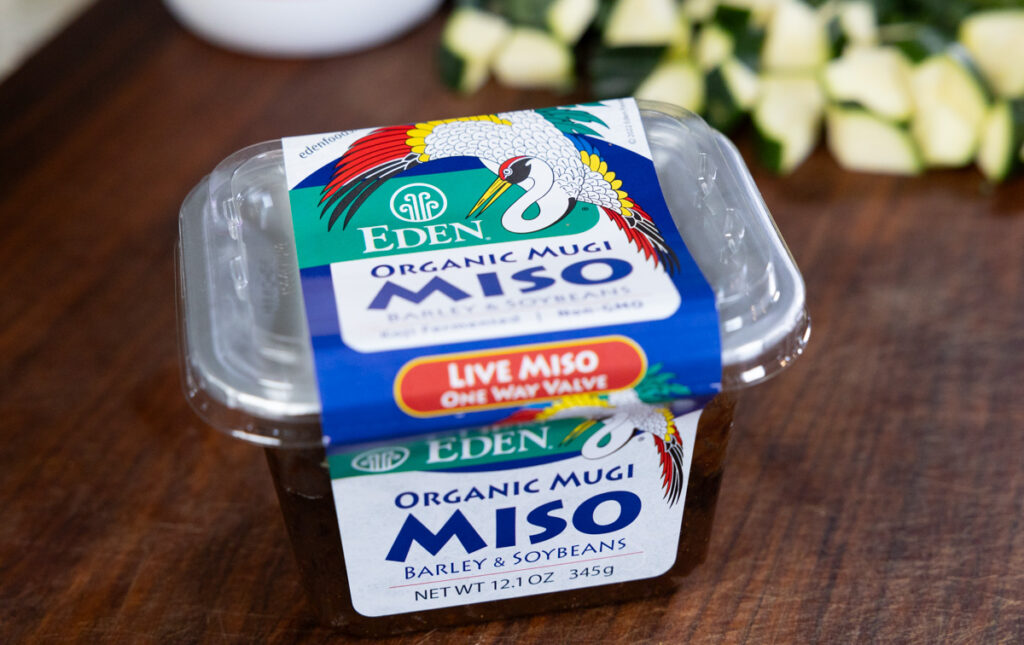
Miso can be made from rice, barley, soybean, chickpeas, and more. Soy-based misos are the most common type, but you can find soy-free varieties.
Due to its salty-sour fermented taste, miso encourages hydration and water retention, which can be really helpful for dry individuals who suffer from constipation or dry skin.
Miso is also a probiotic. To preserve these qualities, avoid boiling it. Generally, you want to turn off the heat, remove some of the hot liquid into a separate bowl, dissolve the miso in this liquid, then return it to the soup.
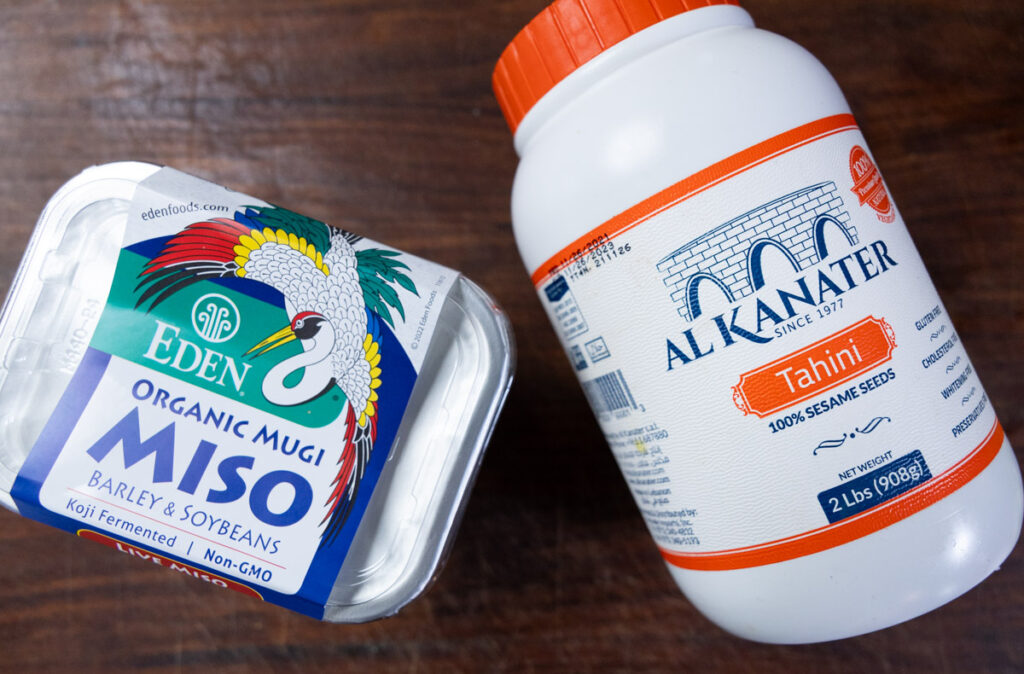
Tahini
Tahini is a creamy paste made from blended sesame seeds. A rich source of healthy fats, tahini is mostly sweet with a mild, bitter undertone.
If you’re ever craving sesame seeds or tahini, it could be due to the high calcium content, and you’re actually craving calcium to nourish your bones.
Tahini is a key ingredient in hummus, and is common in Mediterranean cuisine. Once you try tahini, you might wonder where it’s been all your life.
Zucchini and/or leafy greens
I love zucchini in this soup, because it is cooling and super easy to digest. I especially like the texture of zucchini in soups when it’s grated. It gives the soup broth rich texture and soothing mouthfeel.
Use any type of leafy green you like in this soup. You can use just the greens, or a combination of zucchini and greens. You can also use multiple greens if you’d like.
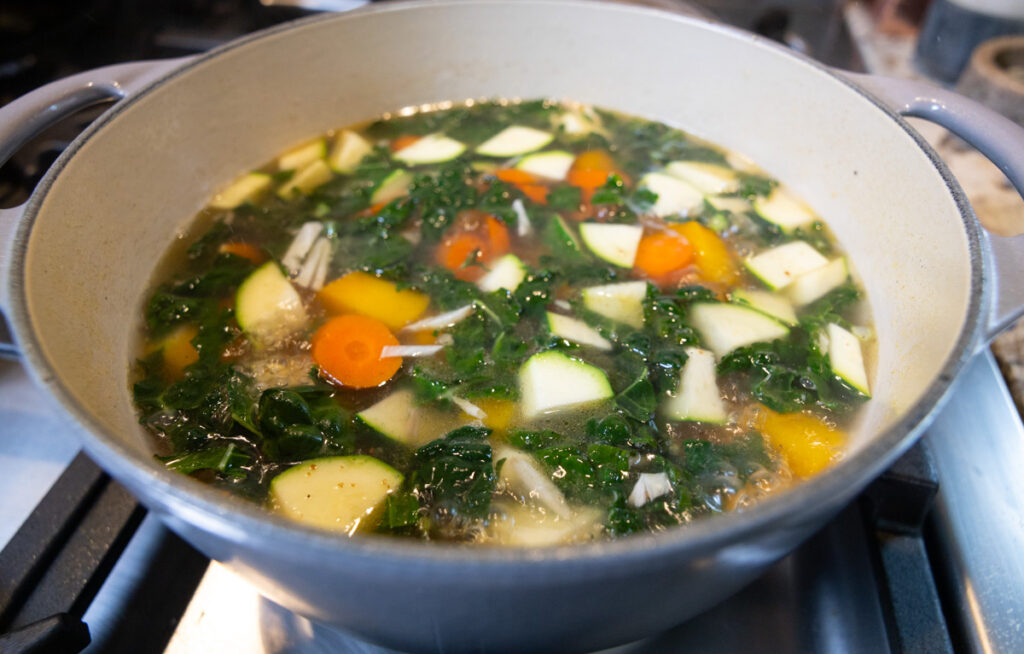
Try green or purple cabbage, kale, collards, Swiss chard, spinach, or green onion. You could even try Asian greens, such as napa cabbage, gai lan, pea shoots, bok choy, or yau choy.
Note that green vegetables are super healthy for most people to eat on a daily basis. They help with daily detox, and assist with digestion and overall balance.
Dosha variations
You might notice that this soup has a very low calorie count. It is also warming, and highly digestible, so I this soup will be most nourishing for Vata and Kapha types.
VATA DOSHA
Vata types will be the most nourished by this soup due to the warming, salty, miso, the nourishing, warming sesame, and the overall ease of digestibility.
For Vata types with a smaller appetite, this soup could be a meal on its own.
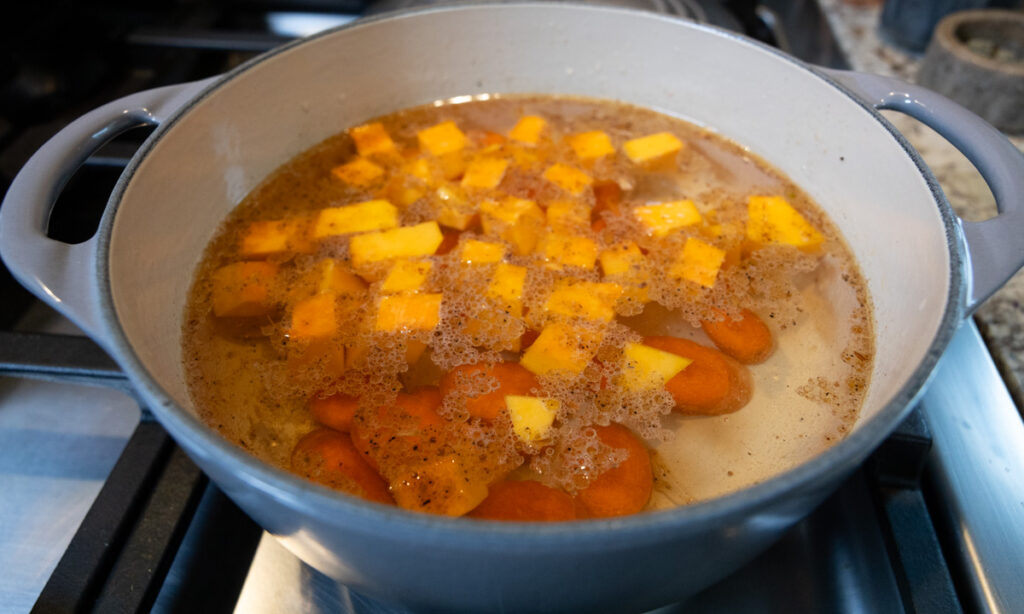
KAPHA DOSHA
Kapha types will be nourished by the warmth and overall lightness of the dish. Kapha’s can consider omitting the tahini to make the soup less rich, replacing the carrots with daikon radish, and using the leafy greens rather than the zucchini, which will bring in more cleansing qualities. A pinch of cayenne pepper may also be supportive to aid digestion.
Kapha types may pair their soup with cooked millet or buckwheat, which are lighter grains with astringent, or drying qualities. A leafy green salad could also work at lunchtime.
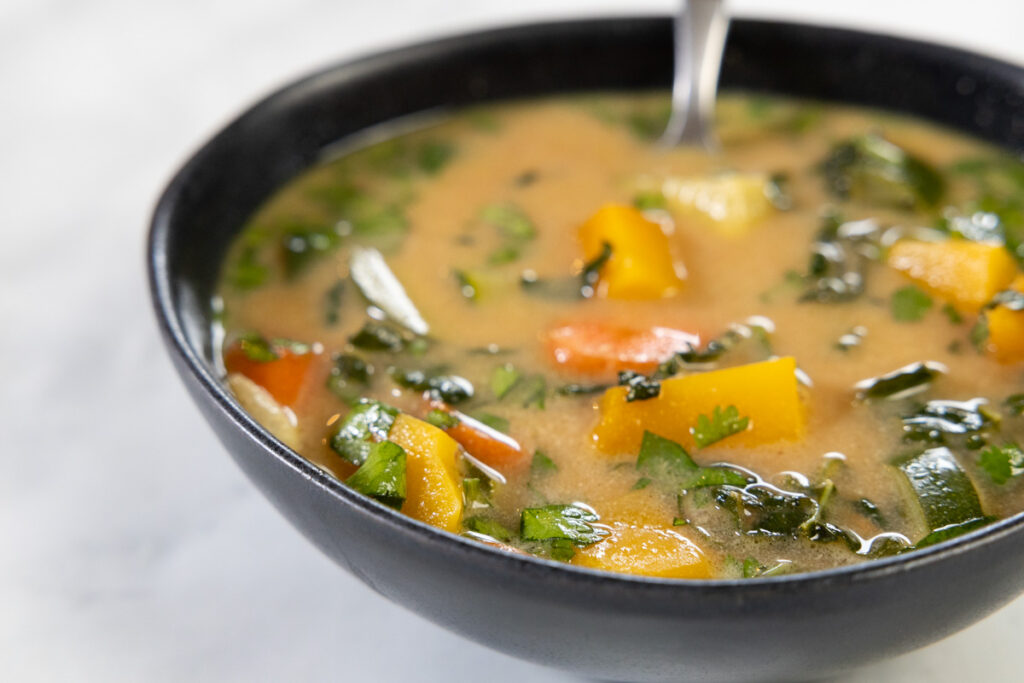
PITTA DOSHA
Pitta types may find this soup too heating, as both miso and tahini are heating.
To remedy the heat, include extra leafy greens, and enjoy with cooling grains, such as rice or wheat, to balance the heat and satisfy the appetite. An additional green salad will also bring coolness to the meal.
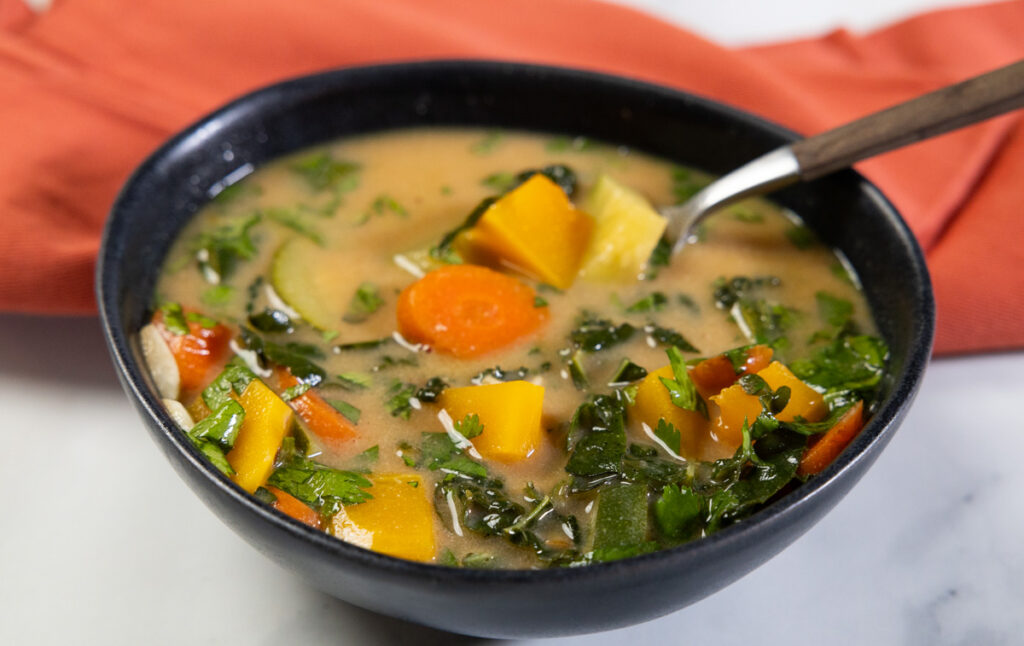

Recipe for Miso Tahini Vegetable Soup
Equipment
- Medium saucepan – 3.5 quart
Ingredients
to start
- 2 teaspoons sesame oil
- 1 clove garlic chopped
- 1/4 teaspoon cumin seed or powder
- 1/8 teaspoon black pepper
to add
- 4 cups water
- 1 cup carrot chopped
- 1 1/2 cups sweet potatoes or winter squash (ie. butternut) chopped
- 2-3 cups zucchini or leafy greens chopped (see notes for options)
- 1 teaspoon vinegar (white wine, apple cider, etc.)
to finish
- 2 tablespoons tahini
- 1-2 tablespoons miso to taste
- 2 tablespoons cilantro or parsley (optional)
Instructions
to prepare
- Chop garlic and set aside. Chop carrots and sweet potato or squash. You will have time to chop the zucchini and/or leafy greens while the soup is simmering, or you can prepare it ahead of time.
to start the soup
- Get your cumin and black pepper out, then heat sesame oil in a medium saucepan. Add garlic, cumin, and black pepper. Sizzle for 20-30 seconds, until you can smell the aroma of the spices and the garlic is lightly browned.
to add to the soup
- Add water, along with the chopped carrots and sweet potato or squash. Bring to a boil, then reduce heat and simmer for 10 minutes. Add the zucchini and/or leafy greens, along with the vinegar, and simmer another 10 minutes. Turn off the heat.
to finish the soup
- Remove a cup of broth and place it in a small bowl. Add miso and tahini and stir well to dissolve. Pour the mixture back into the broth, along with the optional cilantro, and stir.
- Taste, and balance the flavors with extra miso, salt, vinegar, and/or black pepper.

Love all the options for vegetable additions. And that you have highlighted changes for each Dosha type. I look forward to making this soon. Thank you so much for another great posted recipe.
Thanks Kathy! I intend to move more in this direction of including dosha variations in new recipe posts. I hope you enjoy this health recipe. —Andrea